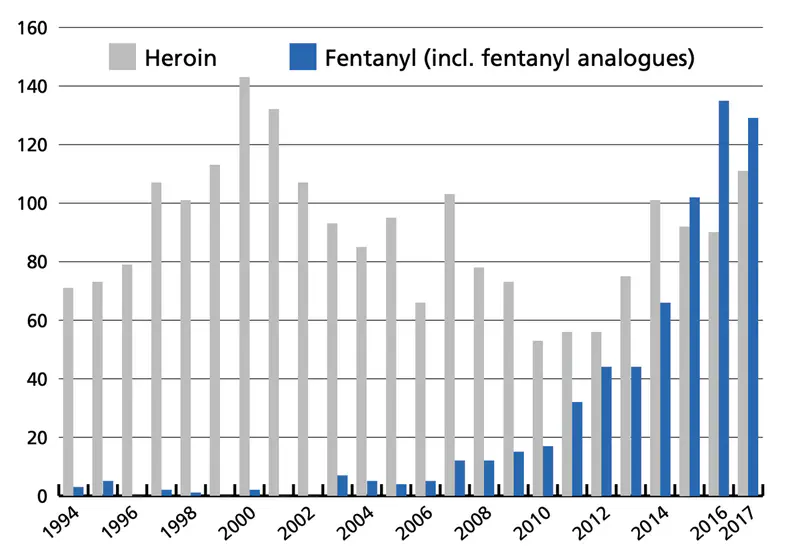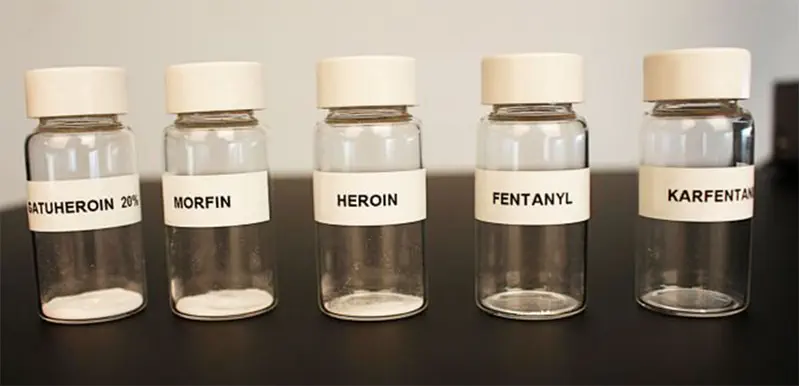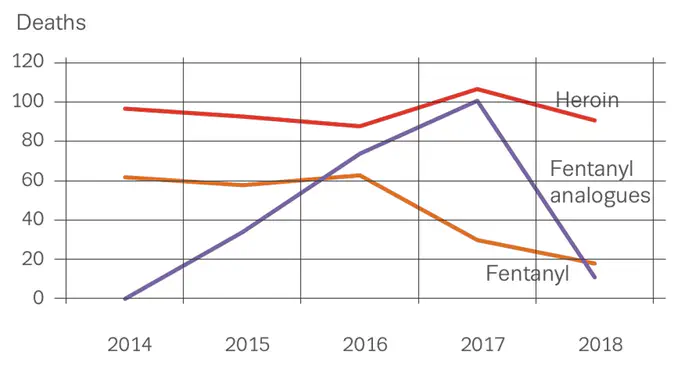Drug and Alcohol Problems in Sweden

There’s no corner of the world that escapes the touch of drug and alcohol abuse. It’s easy to blame those who profit from these substances, alcohol beverage companies and drug dealers, but there must be some weakness or vulnerability in a person who becomes addicted. At that point, the most important thing is getting this person the help they need to recover.
Alcohol Problems in Sweden
The rate of alcohol consumption in Sweden is extremely high but that doesn’t mean they are all problem drinkers. Nine out of ten Swedes over 17 years of age had a drink in the last year.1 Almost half will have a drink every week but still, that doesn’t mean they are addicted.
Researchers have estimated that as many as one million Swedes drink enough to create health or social problems for themselves. Drinking despite the problems caused in one’s life is one of the hallmarks of alcoholism because it means the person either doesn’t see the problem or can’t make an effective decision to quit drinking.
Despite this high rate of problematic drinking, Sweden experiences lower harm to the lives of the drinkers than is experienced in Finland and Denmark.2
One bright spot in the landscape of alcohol misuse is that the rate of alcohol use by Swedish youth is approximately half the average rate of use in other EU countries.3
The Changing Drug Abuse Scene
Until a few years ago, fentanyl and fentanyl analogues (chemically similar drugs) were stealing away an increasing number of lives.
In this chart, you can see how the number of lives lost to heroin (gray bars) dropped as the number of lives taken by fentanyl increased.

Courtesy of the National Public Health Agency (Toxreg database)
What did Swedish legislators do about this catastrophe? First, they discovered that the problem did not result so much from fentanyl itself as the fentanyl analogues on the market.
While fentanyl was an illegal substance, many of the analogues were not illegal.4 So drug dealers would manufacture these similar drugs and market them as legal ways to get high.
Legislators were always trying to catch up to the drug dealers’ tricks by outlawing each new analogue as it came on the market. But there are dozens of analogues. Sweden was losing citizens to drugs like:
- cyclopropylfentanyl
- Acrylfentanyl
- Acetylfentanyl
- 4F-isobutyrfentanyl
- Furanylfentanyl
- Butyrfentanyl.
Getting new legislation passed each time a new analogue arrived on the illicit market took time and legislators couldn’t ever catch up.
Why Did Drug Dealers Like Fentanyl So Much?
Fentanyl was an extremely popular drug with drug traffickers and dealers because it is cheap to manufacture since it is fully synthetic. It is also powerfully potent in very small doses, which means tens of thousands of doses can be transported in a small package.
In this image published by the International Narcotics Control Board, you can compare the amounts of each of these opioid drugs required to cause a fatal overdose. It is easy to see why fentanyl is easier to transport than other drugs because of the tiny amount needed to get a person high—or cause their death.

Courtesy of DEA.gov
Until each form of the drug was banned with new legislation, drug dealers could not be arrested, even if someone died as a result of taking their poisons. Finally, researchers began to raise their voices to bring attention to the loss of life and the need for a solution.5 They wanted to avoid the disastrous loss of life that was occurring in the United States.
Between 2015 and 2018, nearly 400 lives were lost to these drugs.6 In October 2017 alone, 24 people died. These different types of fentanyl were coming into the country from China, most often by PostNord. Sadly, those dying in Sweden are younger than in other EU countries.3 Those aged 25 to 35 are the most endangered by drugs.
Gradually, more analogues were banned. As this was occurring, law enforcement personnel began to devise a new solution. They began to prosecute drug dealers for knowingly selling products that they knew could cause death.7 After a few successes, and as more types of fentanyl were outlawed, the number of deaths began to drop.8
In the following chart, you can see how the number of deaths from fentanyl fell after these changes were made.

Courtesy of polisen.se
Cannabis Use is Widespread
As in all European countries, cannabis use is widespread. It is, in fact, the most commonly abused drug in Sweden but the rate of use is lower than other European countries. The age group most likely to consume cannabis products is those aged 15 to 24 and, as is very common, males use the drug more often than females.
Each year, more than 2,000 people enter rehab to get help for a cannabis habit that has gotten out of control.3 Nearly half of these are coming back for repeat rehabilitation.
Not surprisingly, cannabis is the most frequently-seized drug. Most of Sweden’s supply of cannabis resin comes from Morocco, and most of the herbal cannabis is smuggled in from abroad since there have been few domestic cultivation sites found in recent years.3
Stimulant Abuse
The most popular stimulants being abused include cocaine, methamphetamine and MDMA, also known as ecstasy. Studies in several Swedish cities measure the quantities of these drugs in the wastewater produced in those cities as a way of estimating usage numbers.3 One of these studies in Stockholm found that residues of cocaine and ecstasy were higher on the weekends than during the week. This is understandable because these are popular drugs to consume at parties and nightclubs. Residues from methamphetamine were more evenly distributed throughout the week which tends to indicate an addiction that must be satisfied each day.
While the number of people using stimulants like ecstasy and cocaine is not high, it is increasing.3 Cocaine use more than doubled in the few years leading up to 2017. Ecstasy use rose from almost zero in 2008 to 2% of the population using the drug in 2017. While cocaine has to make the trek all the way from South America, ecstasy only needs to make the trip from the Netherlands.
Treatment in Sweden
More than 31,000 people enter rehab every year to try to get sober.3 The great majority of these individuals do their work in outpatient clinics. More than 4000 of these individuals receive opioid-substitution therapy (OST) consisting of either methadone or buprenorphine. OST programs are strictly controlled, which may mean that if a person receiving OST is found to have used an illicit drug, they may be dismissed from the OST program and sent to some other type of treatment.
Swedish treatment centers do not offer heroin-assisted treatment as some other EU countries do.
Wherever you go in this world, there are those who are willing to risk the lives of others just so they can gain a profit and perhaps feel more powerful. Wherever this harm is happening, there must be effective ways to help the addicted return to healthy lives. Providing effective help saves lives and saves also thousands of family members from suffering broken hearts when they lose a loved one. That’s why the Narconon drug and alcohol rehabilitation program exists in centers around the world and in Eslöv, Sweden.
Sources:
-
Karalinska Instituet (2021), “One drink too many”. Karalinska Instituet Article ↩︎
-
Emilie E Agardh, Anna-Karin Danielsson, Mats Ramstedt, Astrid Ledgaard Holm, Finn Diderichsen, Knud Juel, Stein Emil Vollset, Ann Kristin Knudsen, Jonas Minet Kinge, Richard White, Vegard Skirbekk, Pia Mäkelä, Mohammad Hossein Forouzanfar, Matthew M Coates, Daniel C Casey, Mohesen Naghavi, Peter Allebeck—National Library of Medicine—National Center for Biotechnology Information (2016), “Alcohol-attributed disease burden in four Nordic countries: a comparison using the Global Burden of Disease, Injuries and Risk Factors 2013 study”. NIH Study ↩︎
-
European Monitoring Cenre for Drugs and Addiction (2019), “Sweden—Country Drug Report 2019”. EMCDDA Report (PDF) ↩︎ ↩︎ ↩︎ ↩︎ ↩︎ ↩︎ ↩︎
-
Kim Moeller, Bengt Svensson: Sage Journals (2020), “‘Shop Until You Drop’: Valuing Fentanyl Analogs on a Swedish Internet Forum”. Sage Journal Article ↩︎
-
Marcus Heiliga and Magnus Tägil: US National Library of Medicine—National Institutes of Health, Acta Orthopaedica (2018), “Do we have an opioid crisis in Scandinavia? Time to act?”. NIH Study ↩︎
-
Polisen.se (2020), “Högsta domstolen fastställer fentanyldom”. Article ↩︎
-
Maria Åkerblom, Polisen.se (2020), “Döden i en sprayflaska” Article ↩︎
-
Bryce Pardo, Jirka Taylor, Jonathan P. Caulkins, Beau Kilmer, Peter Reuter, Bradley D. Stein; RAND Corporation (2019), “The Future of Fentanyl and Other Synthetic Opioids” View the Study (PDF) ↩︎

